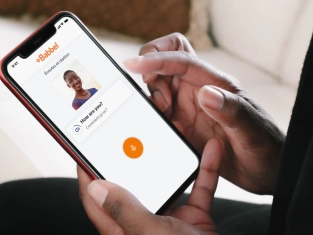by PushtoLearn
How to Answer How Are You
Basic Responses to "How Are You?"
Here are some simple and common responses that you can use in most situations:
➡️ "I'm good, thank you. How about you?"
This is a polite and neutral response that shows you're well and interested in the other person.
➡️ "I'm fine, thanks. And you?"
Another neutral response, suitable for both casual and formal interactions.
➡️ "I'm doing well, thank you."
A slightly more formal response, often used in professional settings.
➡️ "I'm okay, thanks."
A neutral response indicating that everything is fine, without giving too much detail.
➡️ "I'm great, thanks for asking!"
A positive and enthusiastic response, suitable when you're feeling particularly good.
Expanding Your Response
If you want to engage more in the conversation or share more about how you’re feeling, you can expand your response:
➡️ "I’m doing well, just a bit busy with work."
This shows you’re fine but also gives a bit more context.
➡️ "I’m good! I just got back from a nice vacation."
Sharing a little more about your life can help build a connection.
➡️ "I’m okay, just a bit tired from the long week."
This response is honest and gives the other person an idea of how you’re really feeling.
➡️ "I’m feeling great! Just finished a big project at work."
Adding a specific reason for your good mood can make the conversation more engaging.
➡️ "I’m fine, but I’ve had a lot on my plate lately."
This response is honest and can lead to a more meaningful conversation if the other person is interested.
Professional Responses
In professional settings, your response to "How are you?" might need to be a bit more formal:
➡️ "I’m well, thank you. How can I assist you today?"
This shifts the conversation towards business while still being polite.
➡️ "Doing well, thank you. Looking forward to our meeting."
A positive response that shows you’re focused on work.
➡️ "I’m fine, thank you. I’ve been working on the project we discussed."
This response gives a brief update, keeping the conversation professional.
Casual Responses
When chatting with friends or in a more relaxed setting, your response can be more informal:
➡️ "I’m good, just hanging out. You?"
A casual and easy-going response.
➡️ "Doing great! Just enjoying the weekend."
A positive response that fits a relaxed atmosphere.
➡️ "I’m alright, just taking it easy today."
This shows you’re doing okay and gives a hint of your current activity.
Common Mistakes to Avoid
⭐ Giving a one-word response:
"Fine." or "Good." can seem dismissive. It’s better to add a "thank you" or ask the other person how they are as well.
⭐ Being too negative:
Avoid overly negative responses unless you’re close to the person. If you’re not feeling great, a simple "I’m okay, just a bit tired" works better.
⭐ Oversharing in professional settings:
Keep personal details minimal in work contexts. "I’m well, thank you. Busy with work but managing fine," is appropriate.
FAQ
Is it necessary to ask "How are you?" back?
Yes, it’s polite to ask the question back, especially in casual or professional settings.
Can I be honest if I’m not feeling well?
Yes, but keep it brief if the setting is professional or the relationship is not close. For example, "I’m okay, just a bit under the weather."
What if I don’t want to share details?
You can keep your response neutral and brief, such as "I’m fine, thanks."
How do I respond if I don’t know the person well?
Stick to a neutral and polite response, like "I’m doing well, thank you. And you?"
What if I’m in a hurry?
You can quickly respond with "I’m good, thanks!" and continue with what you need to say.

